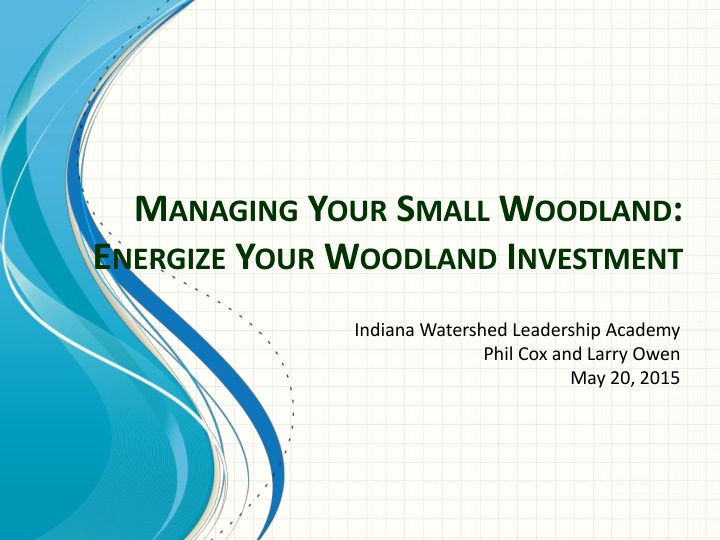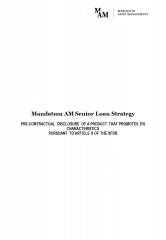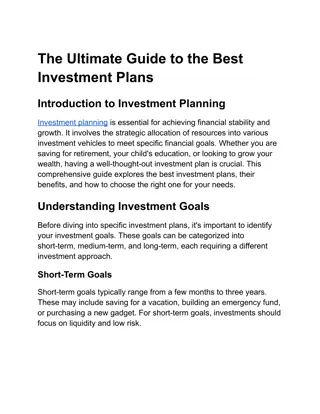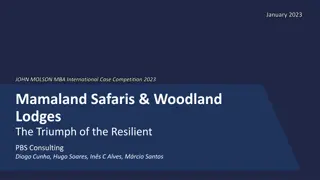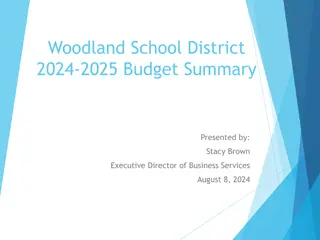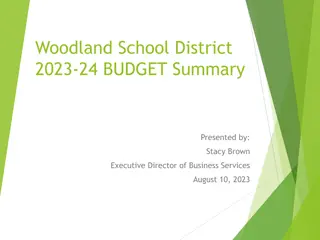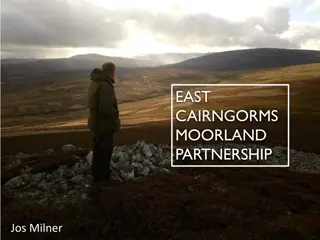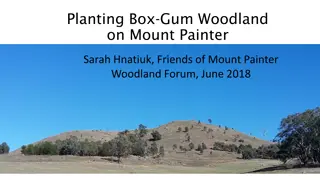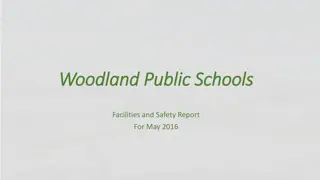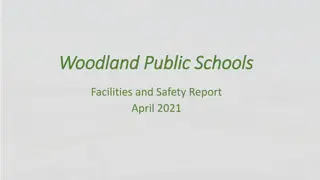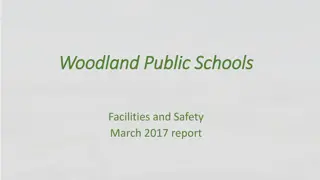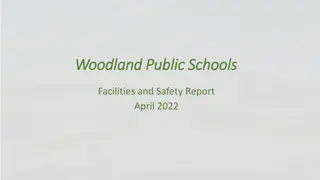Managing Your Small Woodland: Energize Your Investment
Woodlands play a crucial role in supporting watersheds through canopy interception, infiltration, stormwater management, and pollutant removal. Learn how to energize your woodland investment with programs like the Classified Forest & Wildlands Program, invasive species control, timber stand improvement, tree marketing, and forest protection. Discover opportunities for recreational enhancements and permitted activities while ensuring responsible land stewardship.
Download Presentation

Please find below an Image/Link to download the presentation.
The content on the website is provided AS IS for your information and personal use only. It may not be sold, licensed, or shared on other websites without obtaining consent from the author.If you encounter any issues during the download, it is possible that the publisher has removed the file from their server.
You are allowed to download the files provided on this website for personal or commercial use, subject to the condition that they are used lawfully. All files are the property of their respective owners.
The content on the website is provided AS IS for your information and personal use only. It may not be sold, licensed, or shared on other websites without obtaining consent from the author.
E N D
Presentation Transcript
MANAGING YOUR SMALL WOODLAND: ENERGIZE YOUR WOODLAND INVESTMENT Indiana Watershed Leadership Academy Phil Cox and Larry Owen May 20, 2015
How do Woodlands Help Your Watershed? Canopy Interception and Infiltration Trees Consume Stormwater Pollutant Removal and Phytoremediation Streamside or Riparian Forest Buffers Resources: Center for Watershed Protection, www.cwp.org has Urban Watershed Forestry Manuals: Methods for Increasing Forest Cover in a Watershed Conserving & Planting Trees at Development Sites Urban Tree Planting Guide
Energize Your Woodland Investment 1) Classified Forest & Wildlands Program 2) Invasive Species Control 3) Timber Stand Improvement 4) Market Mature, Quality Trees 5) Protect Your Forest
Classified Forest & Wildlands Program Indiana Division of Forestry 10 acres or more of forest or non-forest wildlife habitat. Owner must agree to be good steward of the land and its natural resources.
Certain activities are not allowed Grazing by domestic livestock Building of houses, sheds, etc. Intentional burning (unless in written management plan) Growing Christmas trees
Other activities allowed Wildlife management Maintenance of access roads and trails Timber harvesting Firewood cutting Horseback riding Hiking Hunting
The Indiana Natural Resources Commission met on May 19 to define improvements on Classified Forests and Wildlands. 1. Recreational Improvements allowed: Hunting or wildlife viewing blinds must not be larger than 70 sq. ft. Trails can be used for the following: Running, hiking, horseback riding, biking, ATV/UTV, motocross, snowmobiling, snowshoeing or skiing. Picnic shelters without utility connections. Outhouse without utility connections.
Miscellaneous Improvements Allowed The following types of improvements are generally allowed provided there is no building attached to the improvement. Windmills Cell Phone Towers Oil Derricks Billboards Utility Pole Zip Line Paint ball venues
Primary Benefits to the Owner Reduced property taxes the State of Indiana agrees to see that the assessed value of the land is reduced to $1 per acre, and taxed on that preferential assessment. Regular inspection by a professional forester Timber harvested recognized as Green Certified
Invasive Species Best Management Practices Top Ten List of IN Invasive Plant Advisory Committee 1) 2) 3) 4) 5) 6) 7) 8) 9) 10) Educate recreational users on BMPs Develop an organizational Invasive Species Strategy Create and maintain an Invasive Species knowledge base Pre-plan major land development or maintenance activities Use native plants/seeds and insure they are weed-free Use clean landscaping material, i.e. mulch, fill, straw, gravel Keep tools, equipment, vehicles and clothing clean Have a long term-term plan for managing invasives Monitor disturbed locations and high risk areas Require contractors to follow BMPs More details at: http://www.entm.purdue.edu/iisc/pdf/IPAC_BMPs.pdf
Timber Stand Improvement (Woodland Weeding) Growing the best trees = increased value Release Crop Trees (Thin) to grow faster Control Grape Vines Remove Crooked, Defective and Low Value trees
Timber Stand Improvement will increase the annual return on your forest by 8% per year to about 18% per year with good crop trees.
Market Mature, Quality Trees See a Forester to select your trees to harvest Get an appraisal before selling Solicit Bids Have a contract to protect you and the forest Get paid before trees are harvested Don t just sell your trees. Market and Manage them!! A properly conducted sale will be profitable now and for the future of your forest.
Protect Your Forest Keep out livestock and don t mow the understory Control Fire Maintain a crop of valuable new trees (seedlings) Keep deer herd in balance by hunting bucks and does Don t Fragment your forest by developing. Small tracts become unfeasible to manage and are slowly cleared.
FORESTS ARE THE MOST BENEFICIAL LAND USE FOR PROTECTING WATER QUALITY, DUE TO THEIR ABILITY TO CAPTURE, FILTER, AND RETAIN WATER, AS WELL AS AIR POLLUTION FROM THE AIR. FORESTS ARE ALSO ESSENTIAL TO THE PROVISION OF CLEAN DRINKING WATER TO OVER 10 MILLION RESIDENTS OF THE WATERSHED AND PROVIDE VALUABLE ECOLOGICAL SERVICES AND ECONOMIC BENEFITS INCLUDING CARBON SEQUESTRATION, FLOOD CONTROL, WILDLIFE HABITAT, AND FOREST PRODUCTS. CHESAPEAKE BAY EXECUTIVE COUNCIL, 2006
